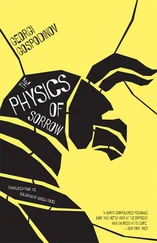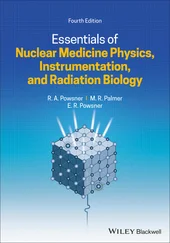5 Appendix 2Table A2.1. Atomic masses of nuclides with atomic numbers Z = 1-14 Table A2.2. Atomic masses of nuclides with atomic numbers Z = 14-38 Table A2.3. Atomic masses of nuclides with atomic numbers Z = 38-64 Table A2.4. Atomic masses of nuclides with atomic numbers Z = 65-93
1 v
2 iii
3 iv
4 ix
5 x
6 xi
7 1
8 2
9 3
10 4
11 5
12 6
13 7
14 8
15 9
16 10
17 11
18 12
19 13
20 14
21 15
22 16
23 17
24 18
25 19
26 20
27 21
28 22
29 23
30 24
31 25
32 26
33 27
34 28
35 29
36 30
37 31
38 32
39 33
40 34
41 35
42 36
43 37
44 38
45 39
46 40
47 41
48 42
49 43
50 44
51 45
52 46
53 47
54 48
55 49
56 50
57 51
58 52
59 53
60 54
61 55
62 56
63 57
64 58
65 59
66 60
67 61
68 62
69 63
70 64
71 65
72 66
73 67
74 69
75 70
76 71
77 72
78 73
79 74
80 75
81 76
82 77
83 78
84 79
85 80
86 81
87 82
88 83
89 84
90 85
91 86
92 87
93 88
94 89
95 90
96 91
97 92
98 93
99 94
100 95
101 96
102 97
103 98
104 99
105 100
106 101
107 102
108 103
109 104
110 105
111 106
112 107
113 108
114 109
115 110
116 111
117 112
118 113
119 114
120 115
121 116
122 117
123 118
124 119
125 120
126 121
127 122
128 123
129 124
130 125
131 126
132 127
133 128
134 129
135 130
136 131
137 132
138 133
139 134
140 135
141 136
142 137
143 138
144 139
145 140
146 141
147 142
148 143
149 144
150 145
151 146
152 147
153 148
154 149
155 150
156 151
157 152
158 153
159 154
160 155
161 156
162 157
163 158
164 159
165 160
166 161
167 162
168 163
169 164
170 165
171 166
172 167
173 168
174 169
175 170
176 171
177 172
178 173
179 174
180 175
181 176
182 177
183 178
184 179
185 180
186 181
187 182
188 183
189 184
190 185
191 186
192 187
193 188
194 189
195 190
196 191
197 192
198 193
199 194
200 195
201 196
202 197
203 198
204 199
205 200
206 201
207 202
208 203
209 204
210 205
211 206
212 207
213 208
214 209
215 210
216 211
217 212
218 213
219 214
220 215
221 216
222 217
223 218
224 219
225 220
226 221
227 222
228 223
229 224
230 225
231 226
232 227
233 229
234 230
235 231
236 232
237 233
238 234
239 235
240 236
241 237
242 238
243 239
244 240
245 241
246 242
247 243
248 244
249 245
250 246
251 247
252 248
253 249
254 250
255 251
256 252
257 253
258 254
259 255
260 256
261 257
262 258
263 259
264 260
265 261
266 262
267 263
268 264
269 265
270 266
271 267
272 268
273 269
274 270
275 271
276 272
277 273
278 274
279 275
280 276
281 277
282 278
283 279
284 280
285 281
286 282
287 283
288 284
289 285
290 286
291 287
292 288
293 289
294 290
295 291
296 292
297 293
298 294
299 295
300 296
301 297
302 298
303 299
304 300
305 301
306 302
307 303
308 304
309 305
310 306
311 307
312 308
313 309
314 310
315 311
316 312
317 313
318 315
319 316
320 317
321 318
322 319
323 320
324 321
325 322
326 323
327 324
328 325
329 326
330 327
331 328
332 329
333 331
334 332
335 333
336 334
337 335
338 336
339 337
340 338
341 339
342 340
343 341
344 342
345 343
Nuclear Physics 1
Nuclear Deexcitations, Spontaneous Nuclear Reactions
Ibrahima Sakho

First published 2021 in Great Britain and the United States by ISTE Ltd and John Wiley & Sons, Inc.
Apart from any fair dealing for the purposes of research or private study, or criticism or review, as permitted under the Copyright, Designs and Patents Act 1988, this publication may only be reproduced, stored or transmitted, in any form or by any means, with the prior permission in writing of the publishers, or in the case of reprographic reproduction in accordance with the terms and licenses issued by the CLA. Enquiries concerning reproduction outside these terms should be sent to the publishers at the undermentioned address:
ISTE Ltd
27-37 St George’s Road
London SW19 4EU
UK
www.iste.co.uk
John Wiley & Sons, Inc.
111 River Street
Hoboken, NJ 07030
USA
www.wiley.com
© ISTE Ltd 2021
The rights of Ibrahima Sakho to be identified as the author of this work have been asserted by him in accordance with the Copyright, Designs and Patents Act 1988.
Library of Congress Control Number: 2021945496
British Library Cataloguing-in-Publication Data
A CIP record for this book is available from the British Library
ISBN 978-1-78630-641-8
Nuclear physics is devoted to the study of the properties of atomic nuclei. These properties relate to the internal structure of the nucleus which facilitate the understanding of the properties of nucleons (neutrons and protons), the mechanisms of nuclear reactions (spontaneous or induced), in order to describe the different processes of elastic and inelastic nucleus-nucleus interactions, the fields of application of nuclear physics and, finally, the impact of nuclear radiation on human health and the environment.
In general, nuclear physics is the physics of low energies, ranging from 250 eV to 10 GeV [SAO 04, GER 07, LAL 11]. The range of energies above 10 GeV [SAO 04, GER 07, LAL 11] relate to the physics of high energies whose purpose is to study the constituent particles of matter and the fundamental interactions between them. In this field, experimenters use particle accelerators that operate at very high energies or deliver very large beam intensities, thus allowing access to the fundamental laws of subatomic physics at very short distances. The most spectacular achievement to date is of course the Large Hadron Collider (LHC), launched in September 2008 at CERN.
Nuclear physics is an area that has experienced considerable growth since the discovery of radioactivity in 1896 by Henri Becquerel [HAL 11], well before the discovery of the atomic nucleus in 1911 by Ernest Rutherford [RUT 11]. Research in nuclear physics covers several topics ranging from subatomic particles to stars. It thus constitutes a fundamental component of physics, allowing the exploration of the infinitely large and the infinitely small [ARN 10]. In addition, nuclear physics makes it possible to understand many astrophysical phenomena such as nucleosynthesis processes (primordial, stellar and explosive) within the framework of the Big Bang model. The study of these processes allows us to understand the origin of chemical elements and to describe the evolution of supernova and neutron stars [SUR 98].
Читать дальше












